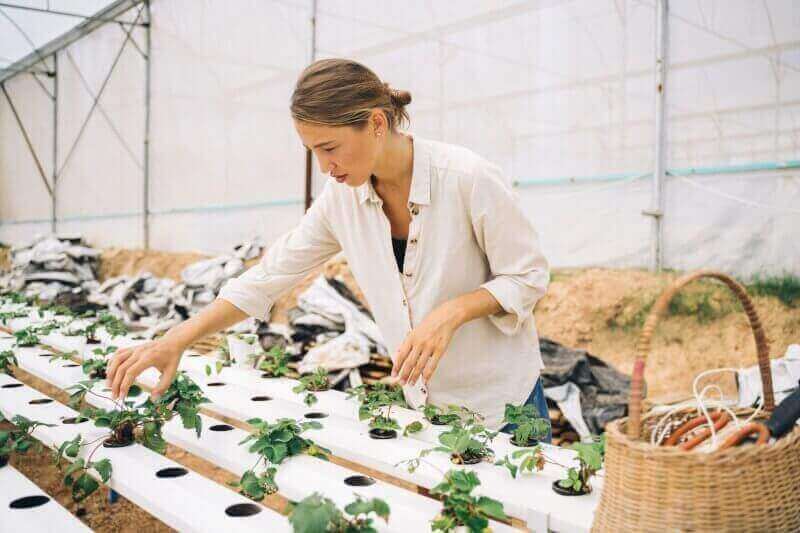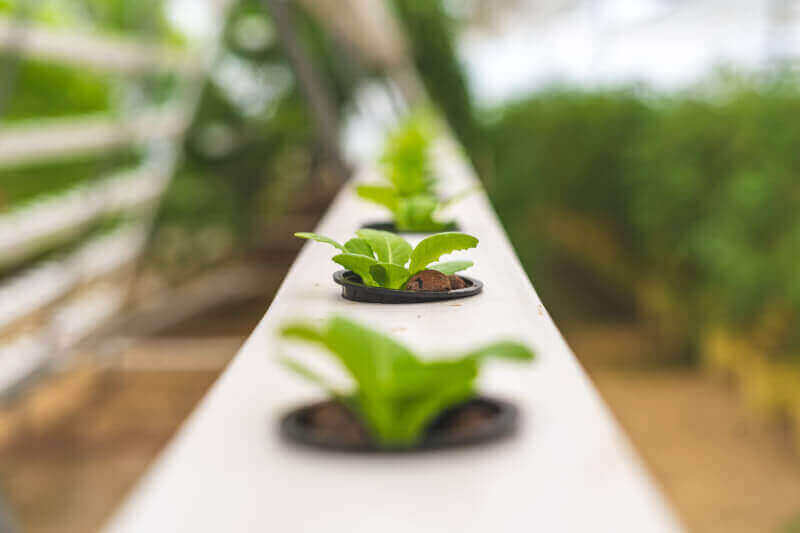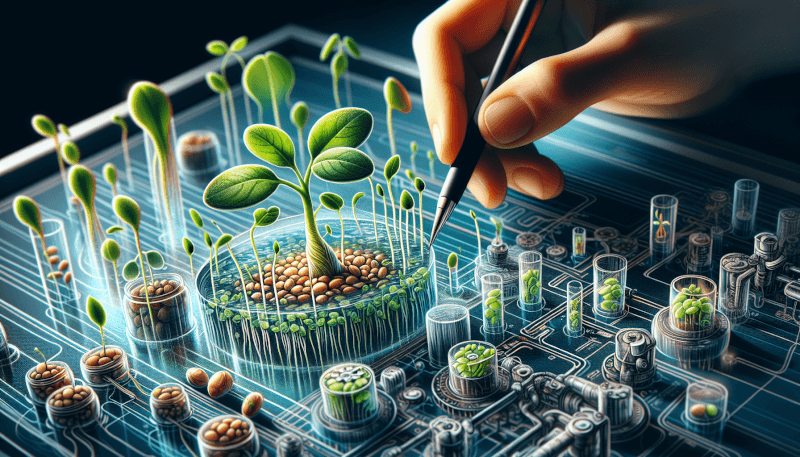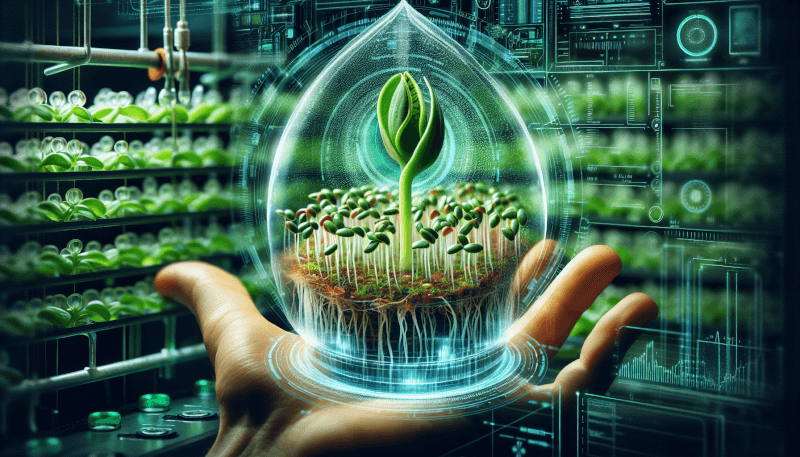👋 Click the mic button to talk to Alfred, the Todd's Seeds Gardening/Sprouting Expert – Feel free to ask him anything!
Ask Virtual Todd Anything - Click the Mic
Imagine a world where you can grow an abundance of fresh, healthy produce all year round, without the need for soil or traditional farming methods. Welcome to the innovative world of Germinating Seeds Hydroponics. In this article, we will explore the fascinating world of hydroponic gardening, a method that allows you to cultivate plants using nutrient-rich water and controlled environments. Discover how this cutting-edge technique is revolutionizing the way we grow our food, offering greater sustainability, efficiency, and versatility. Get ready to embark on a journey that will forever change your perception of gardening.

Choosing Seeds for Hydroponics
When it comes to choosing seeds for your hydroponic system, there are a few factors to consider. First and foremost, you’ll want to select seeds that are well-suited for hydroponic cultivation. Look for varieties that have been specifically bred or adapted for this type of growing environment. Additionally, consider the specific crops you wish to grow and choose seeds that are known for their high germination rates and disease resistance.
Types of Seeds
There are several types of seeds that are commonly used in hydroponics. You can choose from open-pollinated, hybrid, and heirloom seeds. Open-pollinated seeds are the most affordable option and they are the result of natural pollination by wind, insects, or other means. Hybrid seeds, on the other hand, are the product of intentionally controlled cross-pollination between two different parent plants. Heirloom seeds are seeds that have been passed down through generations and are often considered to be of high quality.
Quality and Viability
The quality and viability of the seeds you choose are crucial for successful germination in a hydroponic system. Look for seeds that are plump, glossy, and free from cracks or other damage. It’s also important to select seeds that are fresh, as older seeds may have a lower germination rate. Additionally, consider purchasing seeds from reputable sources that provide information about the seed’s viability and germination rate.
Requirements for Hydroponic Seeds
Hydroponic seeds have specific requirements that differ from traditional soil cultivation. These seeds need to be able to germinate and thrive in a soil-less medium. They should be able to absorb nutrients and water directly from the nutrient solution. Additionally, hydroponic seeds should be able to withstand the unique conditions of a hydroponic system, such as controlled temperature, humidity, and lighting.
Varieties Ideal for Hydroponic Cultivation
Certain varieties of plants are known to perform exceptionally well in hydroponic systems. Leafy greens such as lettuce, spinach, and kale are popular choices for hydroponic cultivation due to their fast growth and high yield. Herbs like parsley, basil, and mint also thrive in hydroponic setups. Additionally, fruit-bearing plants like tomatoes, cucumbers, and peppers can produce abundant harvests in hydroponics. Flowering plants such as marigolds and petunias can also be grown successfully with hydroponic techniques.
Preparing the Germination Medium
The germination medium is the material in which the seeds are placed to initiate germination. In hydroponics, there are several options for the germination medium depending on your preferences and the specific requirements of your plants.
Hydroponic Medium Options
Common options for the germination medium in hydroponics include rockwool cubes, coco coir pellets, jiffy pellets, and seed papers or paper towels. Each of these mediums has its own advantages and disadvantages, so it’s important to consider factors such as water retention, pH stability, and ease of use when selecting the right option for your hydroponic system.
Sterilizing the Medium
Before using any germination medium, it’s essential to sterilize it to prevent the growth of harmful pathogens or pests. This can be done by soaking the medium in a solution of a mild bleach or hydrogen peroxide. Be sure to rinse the medium thoroughly after sterilization to remove any residual chemicals that may be harmful to your plants.
Balancing pH Levels
The pH level of the germination medium plays a crucial role in seed germination. Most seeds prefer a slightly acidic to neutral pH range. Use a pH meter or test strips to monitor and adjust the pH of your germination medium. A pH of around 5.5 to 6.5 is generally considered ideal for most hydroponic seeds.
Soaking the Seeds
Before placing the seeds in the germination medium, it’s beneficial to soak them in water for a period of time. This helps to initiate the germination process and ensures that the seeds have absorbed enough moisture to start sprouting. The soaking time may vary depending on the specific type of seed, so be sure to consult the seed packet or a reliable resource for guidelines.
Optimizing Germination Conditions
Creating the right conditions for germination is essential for the successful growth of your hydroponic plants. Pay attention to the following factors to optimize the germination process.
Correct Temperature
Different seeds have different temperature requirements for germination. In general, most hydroponic seeds prefer a temperature range of 70 to 85 degrees Fahrenheit. Use a thermometer to monitor the temperature in your germination area and adjust as needed. Consider using a seedling heat mat to provide a consistent and optimal temperature for germination.
Proper Humidity
Maintaining proper humidity levels is crucial for seed germination. Most seeds require high humidity levels to absorb moisture and initiate growth. Covering the germination trays or using a humidity dome can help to create a humid environment. Use a hygrometer to monitor humidity levels and adjust as needed.
LED/Optimal Light Spectrum
Light is an essential factor for germination. While natural sunlight can be used, it may not always be available or consistent. Using LED grow lights that emit the optimal light spectrum for seed germination can ensure consistent and successful growth. Blue spectrum lights are ideal for promoting root development, while red spectrum lights encourage vegetative growth.

Nutrient Solution Strength
Although seeds do not require nutrients during the germination phase, providing a weak nutrient solution can help support the growth of seedlings once they emerge. The nutrient solution should be diluted to the appropriate strength according to the manufacturer’s instructions. Too strong a solution can be detrimental to germination and seedling development.
Oxygenation and Aeration
Seeds need oxygen to germinate and establish healthy root systems. Proper aeration of the germination medium can facilitate oxygen exchange and prevent the seeds from rotting. Ensure that the germination medium allows for sufficient airflow, and consider using an airstone or air pump to enhance oxygenation.
Different Methods for Germination
There are various methods to germinate seeds for hydroponics. Here are a few common techniques:
Seed Paper/Paper Towel Method
The seed paper or paper towel method involves placing the seeds between layers of moistened paper and providing the appropriate germination conditions. Once the seeds have sprouted, they can be carefully transferred to the germination medium.
Rockwool Cubes
Rockwool cubes are a popular germination medium in hydroponics. Simply place the seeds in pre-dug holes and provide the necessary conditions for germination. The seedlings can be easily transplanted to the hydroponic system once they have developed a strong root system.
Coco Coir Pellets
Coco coir pellets are compressed discs made from coconut fiber. They expand when soaked in water, providing a suitable medium for germination. Place the seeds in the pre-moistened pellets and provide the optimal germination conditions.
Jiffy Pellets
Jiffy pellets are another convenient option for germinating seeds. These peat-based pellets expand when water is added and create a perfect environment for seed germination. Place the seeds in the expanded pellets and maintain the appropriate conditions for germination.

Floating Technique
The floating technique involves placing the seeds on a piece of foam or a raft that floats in a shallow container of nutrient solution. This method allows the seeds to absorb moisture and nutrients directly from the solution, initiating germination.
Germination Techniques for Different Seed Types
Different types of seeds have unique characteristics and requirements for successful germination. Here are some guidelines for germinating common seed types in hydroponics:
Leafy Greens and Herbs
Leafy greens and herbs, such as lettuce, spinach, and basil, often have small seeds that require a shallow planting depth. Use a fine germination medium and provide high humidity levels and moderate temperatures for optimal germination.
Root Crops (Carrots, Radishes, etc.)
Root crops like carrots and radishes have larger seeds and may require deeper germination medium. Ensure that the medium is loose and well-draining to prevent rotting. Maintain consistent moisture levels for successful germination.
Fruit-Bearing Plants
Seeds of fruit-bearing plants like tomatoes, cucumbers, and peppers may benefit from scarification or the removal of the seed coat to aid germination. Soaking the seeds in water for a longer period may also help break dormancy and improve germination rates.
Flowering Plants
Germinating seeds of flowering plants may differ based on the specific type of plant. Some flowering plants, like marigolds and petunias, require darkness for germination, while others may require light. Consult the seed packet or reliable resources for specific instructions.
Factors Affecting Germination Success
Several factors can impact the success of seed germination in a hydroponic system. Being aware of these factors can help you mitigate potential issues and ensure higher germination rates.

Seed Quality
The quality of the seeds you choose is paramount to successful germination. Ensure that you obtain seeds from a reputable source that guarantees high viability and germination rates. Proper handling and storage of seeds can also contribute to their quality.
Temperature and Humidity Fluctuations
Fluctuations in temperature and humidity can negatively impact seed germination. Maintain a stable and consistent environment for your seeds, avoiding drastic temperature changes or high fluctuations in humidity levels.
Lighting Intensity
Insufficient or excessive lighting can affect germination rates. Be sure to provide adequate light intensity and duration based on the specific requirements of your seeds. Adjust the distance between the light source and the seeds accordingly.
Nutrient Imbalance
While nutrients may not be required during the germination phase, it is important to maintain a proper nutrient balance once the seedlings emerge. Ensure that the nutrient solution is at an appropriate strength and contains the necessary elements for healthy seedling growth.
Threats from Pests and Diseases
Pests and diseases can hinder germination and seedling growth. Implement proper pest and disease management practices, such as maintaining a clean growing environment and using organic pest control methods. Regularly inspect your seedlings and take immediate action if any issues arise.
Seed Dormancy
Some seeds may exhibit dormancy and require specific treatments, such as scarification or stratification, to break their dormancy and initiate germination. Research the specific requirements for each type of seed to maximize germination success.
Common Germination Problems and Solutions
Despite your best efforts, you may encounter certain issues during the germination process. Here are some common problems and their potential solutions:

Delayed Germination
If your seeds take longer to germinate than expected, check the temperature and humidity levels to ensure they are within the optimal range. Consider presoaking the seeds or providing bottom heat to encourage germination.
Fungus or Mold Growth
Fungus or mold growth on the germination medium can suffocate the seeds and prevent germination. Ensure proper ventilation and avoid overwatering. If mold appears, remove the affected seeds or seedlings and improve airflow in the germination area.
Poor Root Development
If your seedlings have weak or stunted root systems, it may indicate an issue with oxygenation or overwatering. Improve aeration in the germination medium and adjust watering practices to achieve a balance between moisture and oxygen availability.
Damping Off
Damping off is a common condition caused by fungal pathogens that attack seedlings, resulting in wilting and collapse. Avoid overwatering, ensure adequate airflow, and keep the germination area clean and sanitized to prevent damping off.
Nutrient Deficiencies
Seedlings that exhibit nutrient deficiencies may appear stunted, discolored, or have distorted growth. Monitor your nutrient solution and make sure it contains all the necessary elements in the right proportions. Adjust the nutrient strength or add supplements if needed.
Overwatering or Underwatering
Both overwatering and underwatering can have detrimental effects on seed germination. Ensure that the germination medium is evenly moist but not saturated. Monitor moisture levels and adjust your watering practices accordingly.
Transferring Germinated Seeds to the Hydroponic System
Once your seeds have germinated and developed into healthy seedlings, it’s time to transfer them to the hydroponic system for further growth.
Seedling Stage
The seedling stage is a critical period of growth where the young plants are especially vulnerable. It’s important to provide them with a stable environment, adequate light, and a balanced nutrient solution to ensure their successful transition into the hydroponic system.
Selecting Healthy Seedlings
Choose seedlings that have strong, well-developed roots and vibrant foliage. Avoid seedlings with signs of disease or pests, as they can spread and cause problems in your hydroponic system.
Preparing the Hydroponic System
Before transplanting the seedlings, ensure that your hydroponic system is properly set up and ready to receive them. Check that the nutrient solution is properly mixed, the pH is within the appropriate range, and all necessary equipment, such as pumps and timers, is functioning correctly.
Transplanting Seedlings
Gently remove the seedlings from the germination medium, taking care not to damage the delicate roots. Place the seedlings into the growing medium of your hydroponic system, making sure they are adequately supported and in contact with the nutrient solution.
Monitoring Germination Progress
Once the seedlings are transplanted into the hydroponic system, it’s important to closely monitor their progress to ensure they continue to grow and thrive.
Daily Observation
Take the time each day to observe your seedlings closely. Look for any signs of stress, nutrient deficiencies, or pests. Monitor their growth rate, the development of new leaves, and the overall health of the plants.
Journaling
Keeping a journal can be a helpful tool for tracking your germination progress. Note down important information such as the date of germination, growth milestones, and any challenges or successes you encounter along the way.
Recording Vital Statistics
Measure and record vital statistics such as pH levels, nutrient solution strength, and temperature. Regularly monitoring these factors will help you identify any trends or patterns that may impact the germination process.
Recognizing Healthy Growth Signs
Learn to recognize healthy growth signs in your seedlings. Strong root growth, vibrant foliage, and vigorous growth are all positive indicators that your seedlings are thriving in their hydroponic environment.
Conclusion and Final Thoughts
Germination is a crucial step in the hydroponic growing process. By choosing the right seeds, preparing the germination medium, optimizing germination conditions, and using the appropriate germination techniques, you can ensure the successful germination of your hydroponic seeds. By monitoring the progress of your seedlings and addressing any issues that arise, you will set yourself up for a thriving hydroponic garden. Remember to be patient and attentive throughout the germination process, as it lays the foundation for the success of your hydroponic cultivation. With the right knowledge and practices, you can achieve bountiful harvests and enjoy the rewards of your hydroponic gardening endeavors.